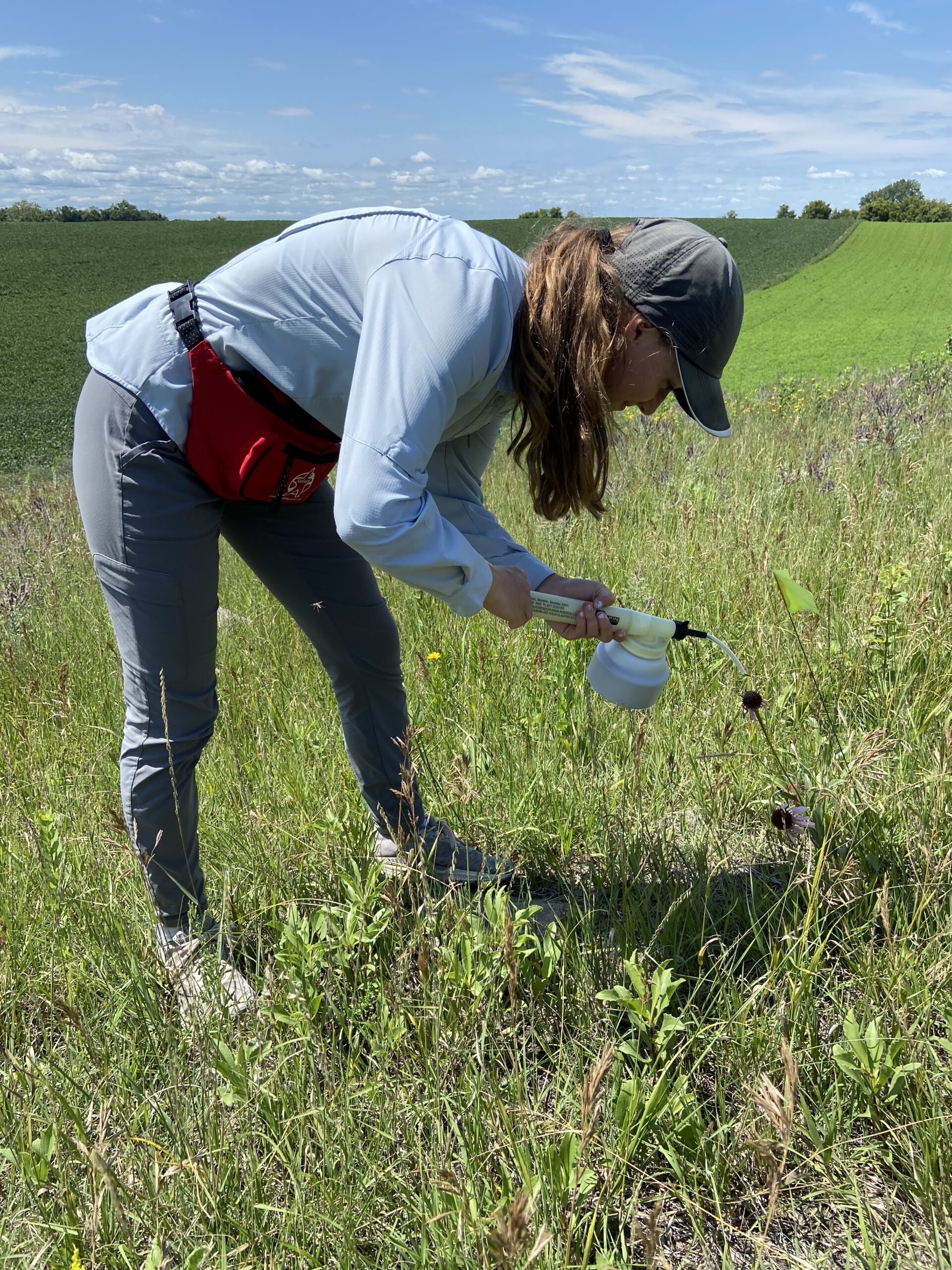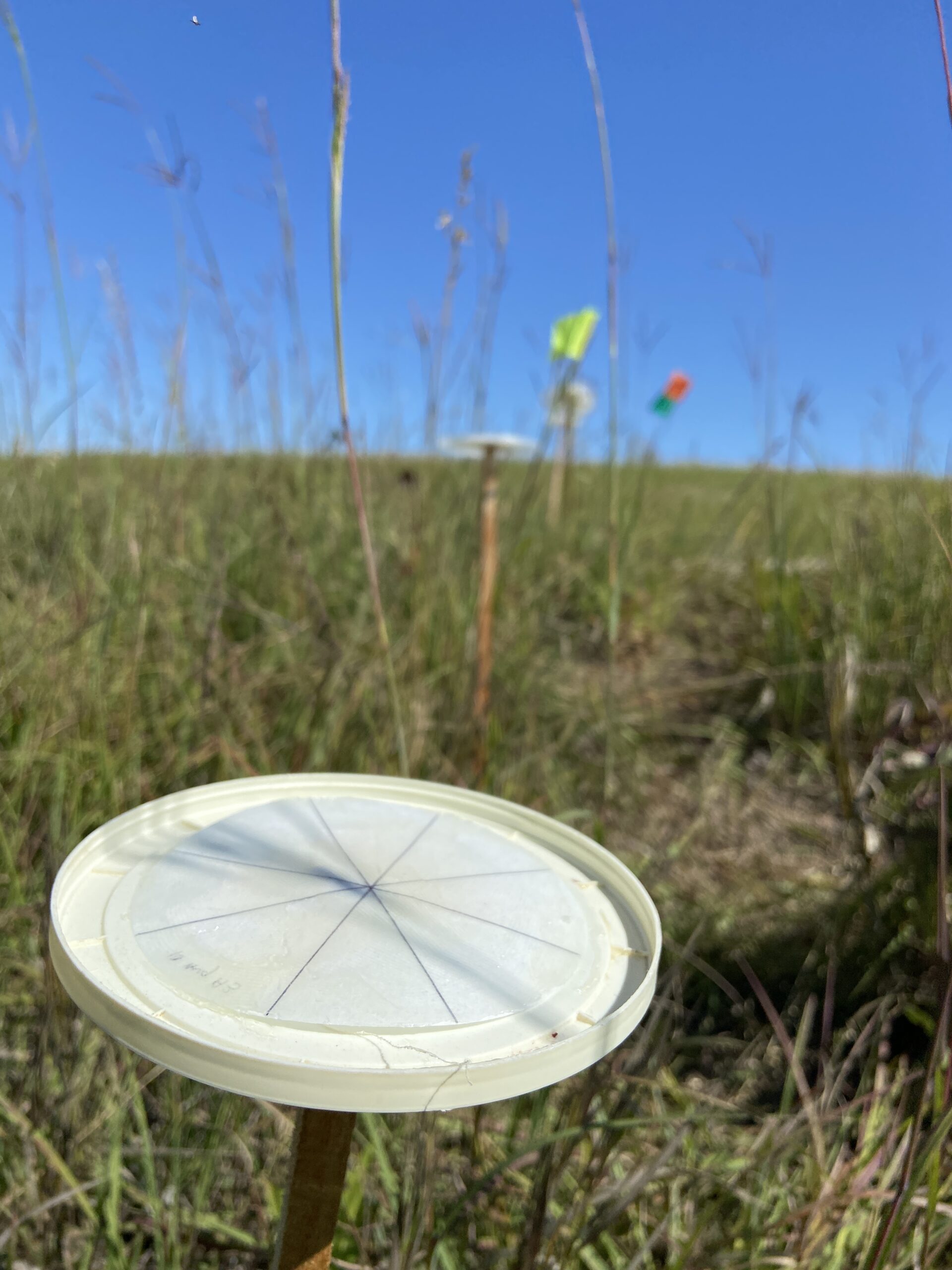In summer 2021, Team Dust began a project to look at the effect of dust on reproduction of Echinacea. They randomly assigned treatments of ‘dust’ or ‘no dust’ to 41 heads in ExPt2. Many heads were eaten by ground squirrels, but they harvested the 18 survivors, and Amy Waananen x-rayed the achenes from these heads in March 2022 to evaluate seed set.
This summer, Emma Reineke took the lead on the project, assisted by Kennedy Porter. They applied dust treatments to 64 Echinacea heads at a prairie remnant, Nice Island. They also conducted an observational study using dust traps to measure dust levels at varying distances from unpaved roads. Learn more in Team Dust’s summer update. In late summer, the team harvested the 64 heads, and Amy now has them at UMN. Emma recently received UROP (undergraduate research opportunities program) funding to continue research on the dust project during spring semester.


- Start year: 2021
- Location: ExPt2 and Nice Island
- Overlaps with: None
- Data collected:
- Relative amounts of dust levels along unpaved roads at Aanenson and Riley
- Datasheets are located at ~Dropbox\teamEchinacea2022\emmaReineke\Dust 2022
- Samples or specimens collected:
- We collected 64 heads, which are currently in the R. Shaw Lab in the Ecology building at UMN.
- The dust traps and dusty styles are also at UMN.
- Products: Amy presented Team Dust’s work at The Prairie Enthusiasts (TPE) conference in February 2022.
You can read past flog entries about the dust experiment here.

Leave a Reply